 Our World
Our World  Our World
Our World  Pop Culture
Pop Culture 10 Incredible Female Comic Book Artists
 Crime
Crime 10 Terrifying Serial Killers from Centuries Ago
 Technology
Technology 10 Hilariously Over-Engineered Solutions to Simple Problems
 Miscellaneous
Miscellaneous 10 Ironic News Stories Straight out of an Alanis Morissette Song
 Politics
Politics 10 Lesser-Known Far-Right Groups of the 21st Century
 History
History Ten Revealing Facts about Daily Domestic Life in the Old West
 Weird Stuff
Weird Stuff 10 Everyday Products Surprisingly Made by Inmates
 Movies and TV
Movies and TV 10 Actors Dragged out of Retirement for One Key Role
 Creepy
Creepy 10 Lesser-Known Shapeshifter Legends from Around the World
 Our World
Our World 10 Science Facts That Will Change How You Look at the World
 Pop Culture
Pop Culture 10 Incredible Female Comic Book Artists
 Crime
Crime 10 Terrifying Serial Killers from Centuries Ago
Who's Behind Listverse?

Jamie Frater
Head Editor
Jamie founded Listverse due to an insatiable desire to share fascinating, obscure, and bizarre facts. He has been a guest speaker on numerous national radio and television stations and is a five time published author.
More About Us Technology
Technology 10 Hilariously Over-Engineered Solutions to Simple Problems
 Miscellaneous
Miscellaneous 10 Ironic News Stories Straight out of an Alanis Morissette Song
 Politics
Politics 10 Lesser-Known Far-Right Groups of the 21st Century
 History
History Ten Revealing Facts about Daily Domestic Life in the Old West
 Weird Stuff
Weird Stuff 10 Everyday Products Surprisingly Made by Inmates
 Movies and TV
Movies and TV 10 Actors Dragged out of Retirement for One Key Role
 Creepy
Creepy 10 Lesser-Known Shapeshifter Legends from Around the World
10 Confounding Secrets Taken To The Grave
As we’ve observed before, secrets turn to mysteries because of the attention they receive from the media and others. All have important personal consequences for the people they touched. But some are historically significant, too. In most cases, we’ll never find the answers because the people who hold the keys to these secrets have taken them to the grave.
10Charles Lightoller

There have been many theories as to exactly what happened when the ocean liner Titanic sank in the North Atlantic in April 1912. But the only surviving senior officer, Second Officer Charles Lightoller, may have known more than he publicly revealed about the disaster that cost 1,500 lives.
According to his granddaughter, novelist Louise Patten, Lightoller told the real story only to his wife, Sylvia. Patten was born after her grandfather died, so she never spoke with him directly about this family secret.
Lightoller wasn’t on duty the night the ship hit the iceberg. But when he met with Captain Edward Smith and First Officer William Murdoch shortly afterward, they supposedly told him what happened.
When Murdoch saw the iceberg, he gave steersman Robert Hitchins the “hard a-starboard” order. But Hitchins panicked, misinterpreted the order, and turned toward the iceberg instead of away from it. By the time Hitchin’s mistake was corrected, it was too late to avoid the iceberg. This was an understandable mistake because sailors were adjusting to a new steering method at that time.
Then Bruce Ismay, chairman of the company that owned the Titanic, persuaded the captain to keep sailing rather than wait for help. Ismay wanted to save his investment and his company’s reputation. According to Patten, by continuing to sail, the ship took water into the damaged hull and hastened its sinking. But some experts say that the decision made no difference.
Patten blames the subsequent cover-up on Ismay. He told her grandfather that the truth would bankrupt the company, and everyone would lose their jobs. So Lightoller lied during the official inquiries. He denied speaking to other senior officers after the ship hit the iceberg. He also lied about the ship receiving several ice warnings before the accident. “He was simply caught between two differing codes of honor, and my grandmother and the rest of the family understood that,” Patten said, according to an Express interview. “There was definitely no sense of shame at all.”
Patten revealed her family’s secret when she was publicizing a novel that used this story in its plotline. She believes no one alive can be hurt by her revelation. But there’s no one alive to verify it, either.
9Boris Berezovsky
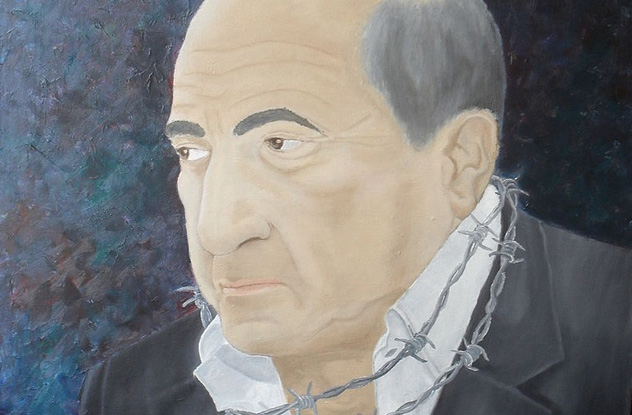
Mystery surrounds the 2013 death of exiled Russian oligarch Boris Berezovsky, who sent a handwritten letter asking President Vladimir Putin to forgive him and let him return to Russia, according to Russian officials. At least one Berezovsky friend disputed that such a letter ever existed.
After communism collapsed in the early 1990s, Berezovsky made a fortune in Russia buying undervalued state assets as one of the new oligarchs who used money to wield political influence. He helped bring Putin to power. But after a serious falling-out between the two men, Berezovsky escaped to Britain to avoid prosecution on fraud charges that he characterized as politically motivated.
Over the years, Berezovsky continued to criticize Putin from afar and seek his ouster. “He was definitely Putin’s opponent,” said Russian spokesman Dmitry Peskov.
Berezovsky once claimed that Scotland Yard had warned him that his life was in danger. But the police wouldn’t confirm this.
Berezovsky also suffered crippling financial setbacks before his death, including the expensive loss of a legal battle with former business partner Roman Abramovich over ownership of a Russian oil company, Sibneft. Friends said Berezovsky became severely depressed.
In 2013, Berezovsky’s body was found on the bathroom floor of his ex-wife’s mansion in Ascot, Berkshire. A black cashmere scarf was around his neck with a second scarf tied around a shower rail over his head. But conflicting evidence and expert witness testimony led the British coroner to return an “open verdict,” meaning the cause of death cannot be ascertained. Did Berezovsky hang himself or was he murdered?
To add to the mystery, bankrupt property tycoon Scot Young and four close associates (including Berezovsky) all appear to have committed suicide after experiencing severe financial losses in the last several years.
8Pope Saint John Paul II
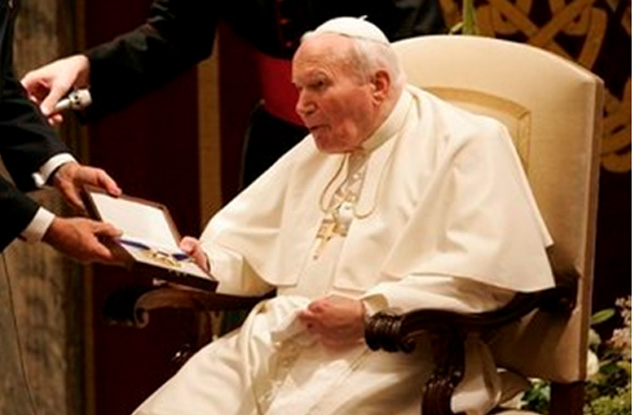
Even Pope Saint John Paul II took a secret to the grave—the name of a cardinal in pectore, which means “close to the heart.” This was the last cardinal John Paul II named, which was in 2003. It’s possible that even the cardinal himself doesn’t know of this honor.
John Paul II’s last spiritual testament didn’t reveal the cardinal’s name, so his tenure ended with John Paul II’s death. He did reveal three of his four in pectore cardinals when he was alive. The first was Ignatius Kung Pin-Mei, Bishop of Shanghai, who was made a cardinal in 1979 (revealed in 1991). The second was Marian Jaworski, Archbishop of Lviv, Ukraine, who was made a cardinal in 1998 (revealed in 2001). The third was Janis Pujats, Archbishop of Riga, Latvia, who was made a cardinal in 1998 (revealed in 2001).
Popes usually appoint in pectore cardinals to protect these men from personal risk in countries where the Roman Catholic Church has a strained relationship with the government.
7Sergei Magnitsky
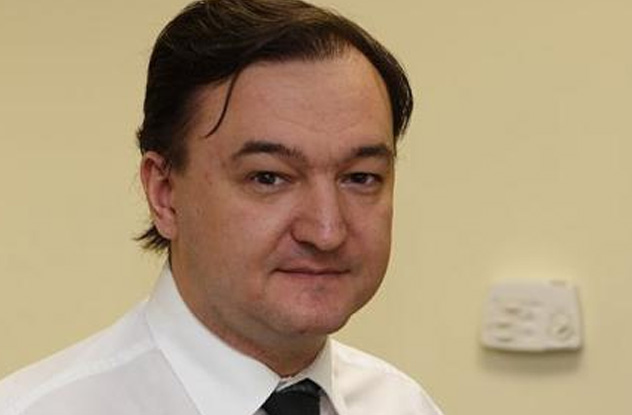
In Russia’s first posthumous trial, lawyer Sergei Magnitsky was convicted of tax fraud in 2013, even though he died in prison under questionable circumstances in 2009 at age 37. He was tried as part of the $230 million tax fraud he uncovered after being hired by William Browder, the head of London-based investment fund Hermitage Capital Management.
Browder was once a huge investor in Russia. But after he complained about corruption within Russian oil company Gazprom, Hermitage subsidiaries were allegedly used illegally by corrupt Russian officials to get a $230 million tax rebate. According to Bloomberg Businessweek, banking records show that Russian officials and their relatives received millions in offshore accounts and real estate in over a dozen countries. Russia hasn’t tried to get the money back for its treasury. Officials claim that their records were destroyed in a truck accident.
Russian prosecutors charged Browder and Magnitsky with tax fraud in the amount of 22 million rubles ($16 million). Although Browder was safely out of the country, Magnitsky had been arrested earlier and was beaten to death in prison, according to the Kremlin’s human rights council. Putin denied these allegations, claiming that Magnitsky died of heart failure. Obviously, Magnitsky will never be able to tell us what really happened. He was tried after his death.
Browder was tried in absentia and received a nine-year jail sentence. He would have to be extradited from Britain to serve it.
“Mr. Magnitsky has been declared a criminal on the basis of unconvincing evidence, while neither the corruption scandal nor the circumstances of his death have been clarified,” said Maja Kocijancic, a spokeswoman for EU foreign policy chief Catherine Ashton.
The case created a political firestorm between US and Russian officials. The US imposed sanctions against Russians involved in human rights abuses including Magnitsky’s death, while the Russians banned Americans from adopting Russian children.
6Esme Millicent Livingstone
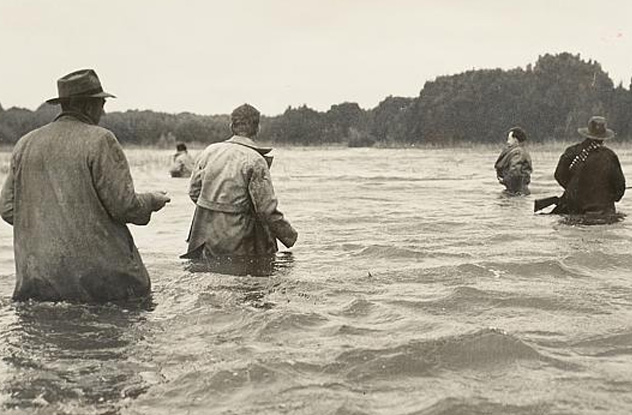
The Lady of the Swamp murder, a famous mystery in Australia, may never be solved. The suspect’s wife, Esme Millicent Livingstone, is believed to have taken that secret to the grave in 1993.
In May 1952, elderly Margaret Clement disappeared under suspicious circumstances from her home in South Gippsland. The 800-hectare (2,000 acre) property, once beautiful pastoral grounds, had been inherited by Ms. Clement and her sister after their father died in the early 1900s. The two young ladies traveled overseas for the next 15 years enjoying their newly inherited wealth. At the same time, their dishonest property managers let the acreage return to swampland. The managers also replaced prize cattle with lesser stock. When the sisters returned, they had to sell off much of their land to pay mounting bills. Margaret Clement’s sister, Jeanne, died in 1950.
In 1951, Ms. Clement’s neighbor, Stanley Russell Livingstone, talked her into selling the property to him for a mere £16,000. She disappeared the following year. A little over a decade later, Livingstone sold the property for almost eight times what he’d paid.
But in 1978, someone found human bones in a small grave near the Clements’ old land. There was also a purse, an old shawl, a shovel, and a hammer nearby.
The police suspected that Livingstone had killed Ms. Clement and then had two Melbourne men bury her body. He was known to have a bad temper. He had also grazed cattle in that area at one time. The police believe Livingstone used his cattle to flatten the ground after the body was buried. Livingstone’s wife had also confided to at least four people at different times that her husband had killed Ms. Clement.
Much of this information came out at the inquest. But Livingstone was never charged. He denied involvement, and his wife told police she was too scared to talk.
When Livingstone died in October 1992 of an apparent heart attack, the police decided to reopen the case. They were getting ready to ask Mrs. Livingstone once more for her help in solving Ms. Clement’s murder. But Mrs. Livingstone died in a nursing home in 1993 before the police could talk to her.
5John Demjanjuk
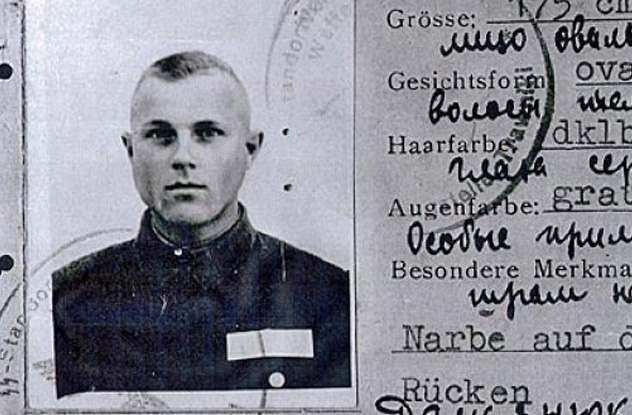
Convicted in a German court of being an accessory to the murder of 28,000 Jews, John Demjanjuk was awaiting the appeal of his five-year prison sentence when he died in 2014 of natural causes at age 91. Demjanjuk maintained until his death that it was a case of mistaken identity and that he had never taken part in the Holocaust. He’d been fighting the accusations for over 30 years.
His son, John Demjanjuk Jr., also proclaimed his father’s innocence. “History will show Germany used him as a scapegoat to blame helpless Ukrainian POWs for the deeds of Nazi Germans,” he said.
Originally from Ukraine, Demjanjuk emigrated to the US in 1952. He was initially extradited to Israel in 1986 to stand trial on charges that he was “Ivan the Terrible,” an infamous guard at the Treblinka death camp. But his conviction was overturned when evidence pointed to another Ukrainian as Ivan the Terrible. The Israelis still believed Demjanjuk had been a guard at a Nazi camp, but they couldn’t legally retry him on the same evidence.
The investigations continued, and Demjanjuk was deported to Germany in 2009. The Germans charged that he’d volunteered to become a member of the SS after he was captured by the Nazis. They produced the SS identity card pictured above, whose photo resembles Demjanjuk, along with Nazi orders sending him to the Sobibor death camp to work as a guard. Relatives of victims testified against him, but no living person had seen him commit the crimes of which he was accused.
Demjanjuk said he became a prisoner of war in Crimea in 1942. Then he joined other anti-communist Soviet POWs in the Vlasov Army. They fought with the Germans against the Soviet Union in the last months of the war. Demjanjuk admitted that he’d lied about his participation in the Vlasov Army when he came to the US. Otherwise, he would have been denied entry.
But after all the investigations and trials, no one is completely certain of who he was and what he did.
4Derek Percy
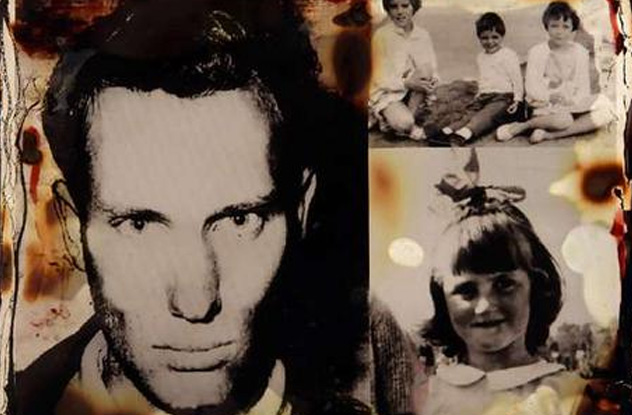
Derek Ernest Percy, a loner whose strange behavior began as a schoolboy, is believed to have become one of Australia’s most notorious child killers. According to crime writer Debi Marshall, Percy wrote about his disturbing fantasies of seducing, torturing, and murdering children, from babies to 14-year-olds. “Everywhere that he went on family holidays or in the Navy, it seemed, children had either disappeared or were found murdered,” Marshall said. The beach, which Percy loved, was a frequent location for the abductions or murders of these children.
When he was 20, Percy admitted to the sadistic murder of Yvonne Elizabeth Tuohy, 12, in Victoria. But he was found not guilty by reason of insanity. He received an indefinite sentence and became the longest-serving prisoner in Victoria.
Percy was also believed to have killed eight other children. Years later, when he got lung cancer and lay dying at age 64, police and the victims’ families hoped he would finally tell them what happened to these children. First, he claimed forgetfulness, and then he denied involvement. He died in 2013 without revealing his secrets.
At least one family felt they finally got some closure when a coroner ruled in 2014 that Percy had abducted and killed seven-year-old Linda Stilwell in 1968. “We just hope that eventually someone will find her remains so that we can give her a decent funeral and show her the respect she deserves,” said her mother, Jean Priest.
3Ludwig van Beethoven

Famous composer Ludwig van Beethoven died a lonely bachelor in 1827, but he left behind a romantic mystery as complex and stirring as any symphony.
Beethoven was believed to have fallen in love several times during his lifetime, but he always chose women who were married or beyond his social status. His desired lovers were always just out of reach. But one unidentified woman, whom he called his “Immortal Beloved,” seems to have eclipsed them all. After his death, a passionate love letter to this mystery woman was discovered among his papers. It was written in three parts—about 10 pages in all—in the Bohemian spa town of Teplitz in the summer of 1812. It’s not known if this letter was ever sent.
Suggesting that theirs was a complicated relationship, Beethoven asked her, “Can you alter the fact that you are not entirely mine, and I am not entirely yours?” And in the last part of the letter, he wrote, “Already in bed, my thoughts go out to you, my Immortal Beloved. I can either live wholly with you or not at all.”
There are many theories, but no one is certain of the identity of Beethoven’s Immortal Beloved. Possible candidates are Josephine Countess von Brunsvik, Countess Julia Guicciardi, Therese Malfatti, and Amalie Sebald. But many scholars believe the most likely candidate is Antonie Brentano, a married woman whose family was close to Beethoven. He dedicated a piano sonata to her eldest daughter, Maximiliane. Later, he dedicated the Diabelli Variations, his final great piano work, to Antonie Brentano.
It seems, however, that the writing of Beethoven’s Immortal Beloved letters coincides with the beginning of a creative dry spell in which he didn’t produce many new works. Maybe he was distracted by something—or someone—else.
2Sam Davis

Sam Davis enlisted as an 18-year-old in the Confederate Army during the Civil War. He’s often called the “Boy Hero of the Confederacy.”
After being wounded a couple of times, he became a courier in Coleman’s Scouts, Army scouts commanded by Captain Henry B. Shaw to spy and deliver messages and other information for the Confederate Army of Tennessee. Shaw was also known as E.C. Coleman.
In November 1863, Davis was captured by Union forces around Nashville, Tennessee. In his saddle, the Union soldiers found detailed maps of their locations and a report on the Union Army in Nashville. The soldiers also found a sealed letter from Coleman to Confederate General Braxton Bragg in the boy’s boot.
Davis was branded a spy and brought to General Grenville Dodge, the local Union commander. Dodge told Davis that he’d be treated leniently if he would give Dodge information about Coleman. Davis refused, was tried as an enemy spy, and was convicted. He was sentenced to hang in Pulaski, Tennessee on his 21st birthday.
As Davis ascended the steps to the gallows, the Union soldiers asked him to identify Coleman one last time. Davis replied, “Do you suppose that I would betray a friend? No, sir; I would die a thousand times first!” He was hanged but not before earning the respect of every Union soldier present.
Unknown to General Dodge, Captain Coleman was captured the same day as Davis. They had Coleman imprisoned with Davis in an adjacent cell, but the boy never betrayed his commander. The Union soldiers believed Coleman was a crippled herbal doctor. Using his real name of Shaw, he’d been imprisoned because he didn’t have adequate identification.
Dodge didn’t find out until after the war that he’d imprisoned Coleman. If Davis had identified Coleman, Coleman would’ve been hanged instead of him.
1Richard A. Moore

The October Surprise conspiracy theory is the supposed plot by Ronald Reagan’s presidential campaign to influence the outcome of the 1980 election. According to the theory, the campaign conspired with Iran to delay the release of 52 American hostages until after the election. This was meant to stop then-president Jimmy Carter from carrying out an “October surprise” hostage release that would help his reelection bid. The American hostages were freed by Iran minutes after Reagan finished his inaugural address in 1981.
A US House of Representatives panel determined in 1992 that then–Republican vice presidential nominee George H.W. Bush didn’t go to Paris in 1980 to influence Iran’s release of the hostages. But journalist Robert Parry appears to be determined to prove otherwise. He wants to know where Bush went on a Sunday in October 1980 when Parry claims witnesses saw Bush at a meeting in Paris with the Iranians.
According to Parry, Bush’s main alibi is that he took an afternoon trip to visit a family friend in Washington on October 19, 1980. Secret Service records show that Barbara Bush accompanied her husband that day. But Parry counters that Mrs. Bush’s visit may have created a false cover story for her husband. Parry also says that a deal was struck with congressional investigators to have Bush identify his alibi witness as long as they agreed not to interview this person or publicly disclose his or her name.
In 2011, after being stymied for years, Parry finally got approval from the National Archives to receive the address where George H.W. Bush went on October 19, 1980—and, along with it, the identity of the alibi witness.
One mystery was solved. The alibi witness was Richard A. Moore, a Bush family friend who was once special counsel to President Richard Nixon during the Watergate affair. If Bush had gone with his wife to visit Moore that October afternoon, then it’s unlikely that Bush went to Paris. But Parry was frustrated once again. By the time Parry learned the identity of the alibi witness, Richard A. Moore was dead. And with his death went the secrets Parry hoped to uncover.

![10 Creepiest Photos Of Victims Taken By Serial Killers [DISTURBING] 10 Creepiest Photos Of Victims Taken By Serial Killers [DISTURBING]](https://listverse.com/wp-content/uploads/2018/09/Regina-Kay-Walters-featured-2-150x150.jpg)






